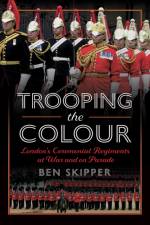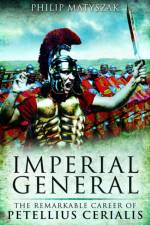av Paul L Dawson
381
Having their origins in the Army of Louis XIV, the dragoons were originally mounted infantry. During the wars of the 1e Empire, they became 'jacks of all trade' equally capable as fighting as battle cavalry, scouting or operating as infantry. Yet, precious few studies have been made of the dress of these thirty regiments or of the ten regiments of lancers which evolved from the dragoons in 1811. The dress and equipment of each regiment of dragoons and lancers in Napoleon's army is analysed and portrayed here with greater accuracy than previously possible. This is because renowned Napoleonic author, Paul Dawson has been granted access to over 1,000 archive boxes, found in the Service Historique de l'Armée de Terre in Paris and the Archives Nationales. These have enabled the author to assesses how the wide ranging 1806 uniform regulations and the more famous Bardin regulations were adopted in practice. This vast resource, as yet untapped by the majority of researchers and historians for understanding the Napoleonic era in general, provides detail never before revealed to the general public. This is possible because every year a regiment would be inspected, and the condition of the uniforms assessed. A return of all the clothing to be disposed of was made, and the appropriate number of new items ordered. Items of clothing and equipment needing repair was also recorded, as was how many items had been repaired since the last inspection. Upon joining a regiment, the recruit was given his first full set of clothing and equipment, which came from stoppages in his pay. Each item of clothing had a specified life. If the items needed repair or replacement inside the prescribed period due to misuse the cost was borne by the soldier. All of this was recorded. There was an annual quota of money available to a colonel to pay for clothing renewals and repairs for his regiment. In addition, the regimental Council of Administration drew funds to buy raw materials, equipment and headdresses. These funds also covered sundry items such as the epaulettes of the adjutant-sous-officiers, lace for rank stripes, service chevrons, musicians and drummers lace, plumes and pompoms, such is the remarkable level of detail these records contain. These invaluable sources provide bias free empirical data from which we can reconstruct the life story of a regiment, its officers and above all its clothing. In addition to the official records, the author has constructed how the regiments were dressed from diaries, letters, and even cases of fraud. As well as providing the recorded details, this book shows in scores of beautiful illustrations exactly how each regiment appeared. These images include period paintings as well as works specifically commissioned for this book, plus unique photographs of existing items of uniform. Now, for the first time since the days of Napoleon, we can say exactly what was worn by Napoleon's cavalry.






























